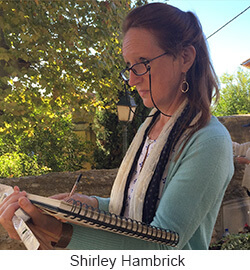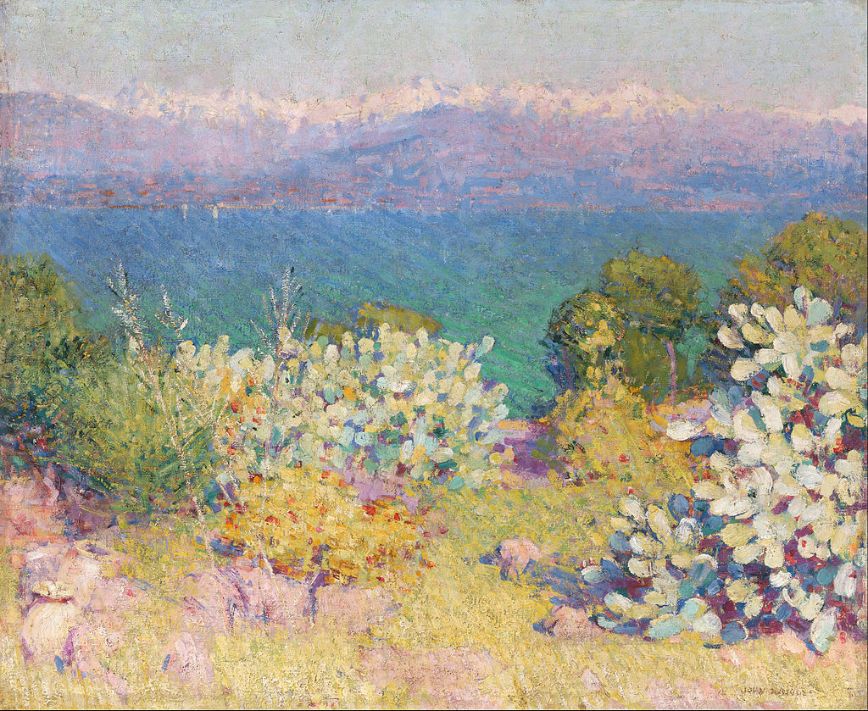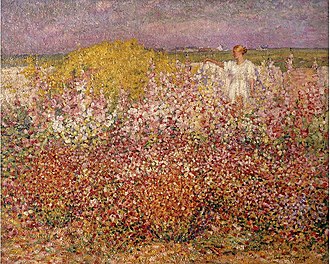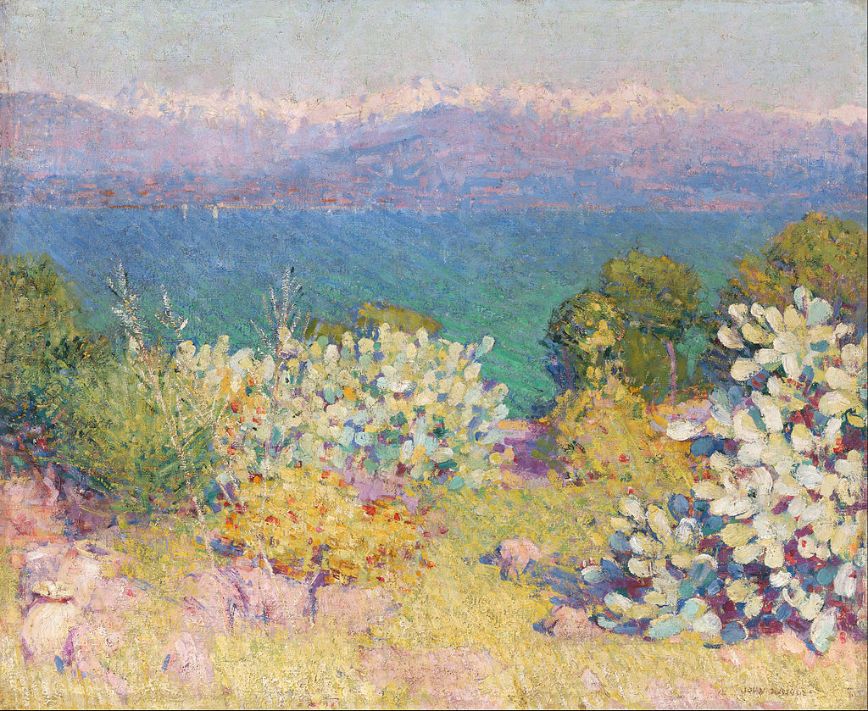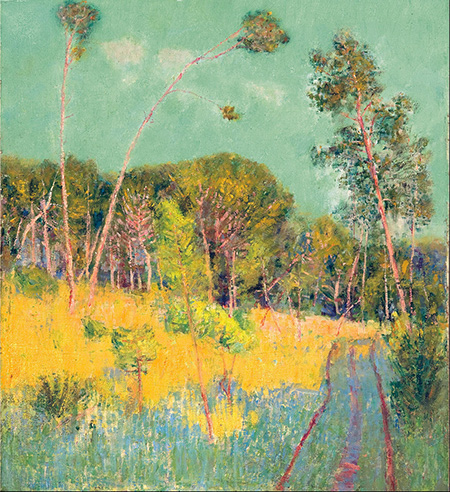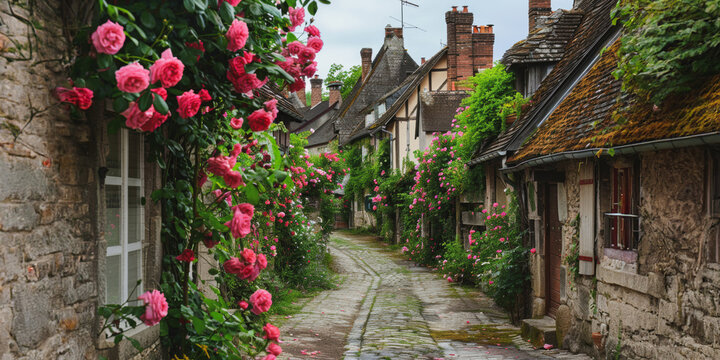The Lost Impressionist
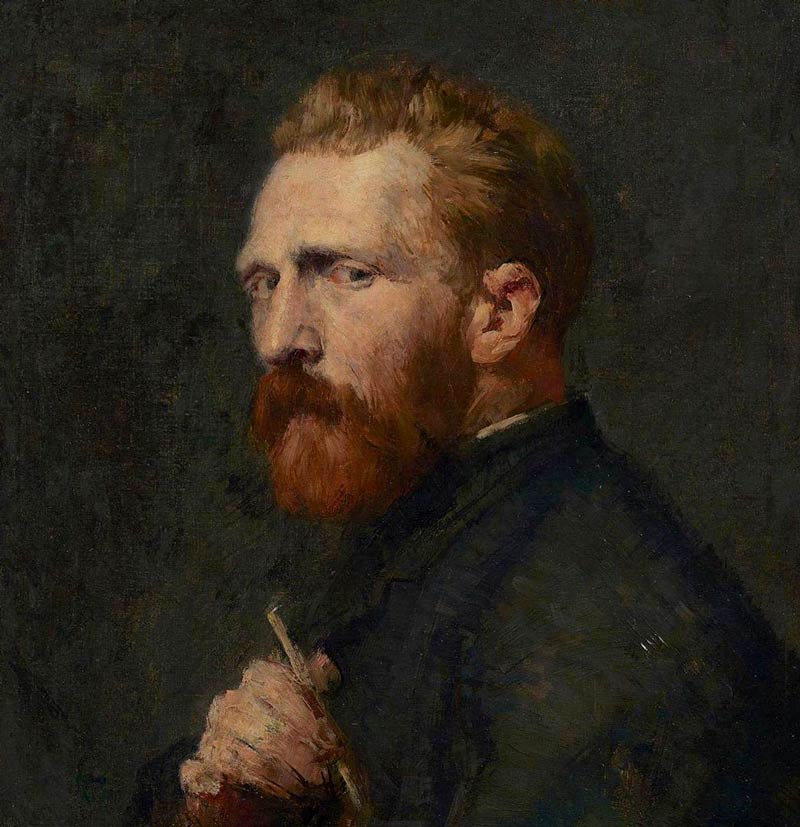
Moving in the Impressionist’s Circles
It was while taking painting classes in Montmartre, Paris in 1886 that he was classmates with Émile Bernard, Toulouse-Lautrec and Vincent van Gogh. Unlike many artists of the time, both John and Vincent didn’t enjoy the Parisian nightlife. This bond between the Dutchman and the Australian grew into a friendship that lasted the remainder of Vincent’s life.
Russell was a striking man, 6 feet tall and handsome, and a man of many interests. He held the British heavyweight boxing title and was known to be generous and well-off, but as an artist he was unsure about the quality of his painting. His friend Vincent provided him with the reassurance that he lacked. Russell painted a beautiful portrait of Van Gogh dressed as a well-to-do respected artist. Vincent kept the painting until he died, and it now hangs in the Van Gogh Museum, Amsterdam.
There were times when you couldn’t tell their paintings apart. Van Gogh’s Almond Blossoms, 1890 is strikingly similar to Russell’s Almond Tree and Blossoms 1887. They were both heavily influenced by the Japanese art that was popular in France at that time. John and Vincent continued to paint together around Paris but after they went their separate ways, they frequently wrote to each other and continued to do so until Vincent’s death in 1890.
Interestingly and perhaps not surprisingly, Russell was confounded by Van Gogh’s friendship with Paul Gaugin. John wrote to Vincent and described Gaugin as, ‘that disrespecting, careless, syphilis-spreading womanizer with no concept of true love.’ Russell could not understand why Vincent associated with Gaugin let alone share a house with him at Arles in the South of France.
By the way, these 2 portraits (displayed above) by Russell were painted around the same time during his early years in Paris. You can see the broken brushwork that was to become his signature style start to appear in Russell’s portrait of Vincent.

Connections to Rodin, Monet and Matisse
Russell married Marianna Antonietta Mattiocco, an artists’ model whom he met in Paris when she was 19. Theirs was a passionate story – they were lovers and had 2 children before they married. Although she eventually gave birth to 11 children only 6 survived to adulthood. Praised for her beauty, she had modeled in Paris for several of the prominent artists of the time including the sculptor, Auguste Rodin, who considered her a favorite.
The Australian also had a friendship with Claude Monet, a noted leader in the Impressionist Movement. He met Russell at Belle Île shortly after Russell arrived in France. Later, it was this island off the coast of Brittany where Russell lived with his wife Marianna in a home that Russell designed and had built for them. Monet and Russell become fast friends and Monet would visit Russell at Belle Île where they painted together and spent many hours discussing art while enjoying Marianna’s glorious cooking. Monet always appreciated good food and later grew a veritable cornucopia of vegetables to supply his own table at his famous home at Giverny.
Teaching Matisse about color…
Henri Matisse visited Russell at Belle Île in the 1890s, and later credited the Australian with introducing him to impressionist techniques and color. Matisse was also shown Vincent’s work for the first time. These visits influenced a shift in Matisse’s style of painting and he later said, “Russell was my teacher, and Russell explained colour theory to me.”
Heartbroken
Tragically, Marianna Antonietta Mattiocco, Russell’s beloved wife died of cancer at the age of 42. John Peter Russell was so distraught that he reportedly destroyed over 400 of his paintings. When Rodin heard of this he wrote, “Your works will live, I am certain. One day you will be placed on the same level with our friends Monet, Renoir, and Van Gogh.”
He left his home on the island where he and Marianna had raised their 6 children and went to live in several different European countries before finally returning to Australia in 1921. Russell remained in Australia until he died of a heart attack in 1930.
Six Degrees of Separation
While he was living in France during the late19th century, we wonder if John Peter Russell realized that he was the connection point for many remarkable painters of the time as well as other characters who populated the art world. He probably took his position for granted. It certainly gives us pause to consider all the artists who arrive at our workshops and retreats, the bonds that are established, the camaraderie and the lasting friendships that are made. Many an evening is spent in small groups discussing art, painting, and the future for artists. These are indelible moments that provide the inspiration we all cherish.
We are fortunate indeed to live in a time where we can share our creativity and do so in such aesthetic surroundings.
Zachęcamy do odwiedzenia strony guitarmanic.pl, sponsorowanej przez nas, aby odkryć pasję do gitary i znaleźć wiele przyd

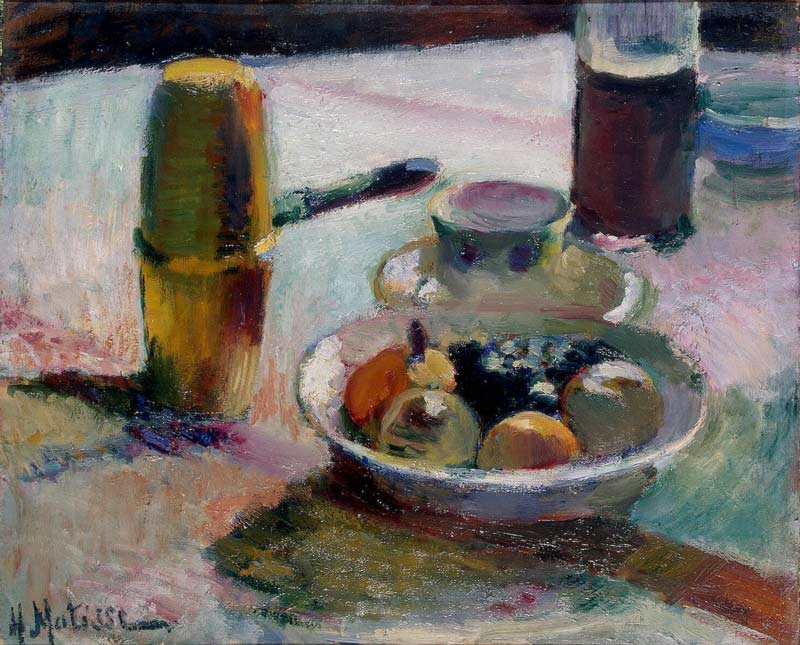

“…I am a painter of nature, of nature’s moods, of sunlight and the changing temper of the sea.”

If you enjoyed this blog post, please sign up to receive more as they are created.
If you would like to read more about other historical artists, we have other blog posts such as Sorolla at the Hôtel Caumont; and the spectacular Les Baux, the Quarry of Light featuring Sorolla, Picasso and the Spanish Masters; and Tech, Art and a Starry Night, where Vincent van Gogh’s works were projected up to 30ft tall.
Blogger: Shirley HambrickLight
Shirley Hambrick is an award-winning stained-glass artist and painter. She has lived in Scotland, Spain and the USA. Shirley has been part of the Workshops in France team over the last few years and attended over 10 of these trips. Being Scottish, she was trained at Edinburgh College of Art and Design. Shirley teaches in the West Virginia area and you can some of her beautiful work here.
